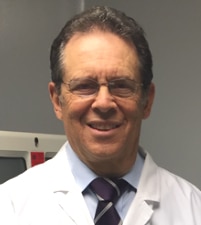
Temple Hills Office
4302 St. Barnabas Road
Temple Hills, MD 20748
Clinton Office
9131 Piscataway Road
Suite #730
Clinton, MD 20735

More Podiatry Foot Care Articles
Minimal-Incision Foot Surgery
You only have one pair of feet to last a lifetime, and most people will clock over 70,000 miles on them in a 70-year life span. Mechanically, the feet are one of the most complex parts of the body. There are 26 bones, 30 joints, 19 muscles, and 107 ligaments in each foot. All of these structures go together to allow the foot to move in six different directions to produce each complete step. No wonder Leonardo da Vinci called the foot “a masterpiece of engineering and a work of art.”
Even though they are built to last a lifetime, foot problems are one of our most common medical ailments. It has been estimated that 80-85% of the general population will suffer from a foot complaint at some time in their life. This is second in frequency only to dental problems.
In the past, many sufferers have avoided permanent cures, opting instead for periodic palliative care. While this type of treatment is very valuable for the elderly and for people with medical conditions that affect circulation (such as diabetes), it is often not the treatment of choice for the active person in pain. In the long run, these regular visits may be extremely time consuming, very expensive, and will not cure a problem that may eventually worsen and produce increasing pain and disability.
Minimal-incision foot surgery is a technique that enables a specially trained doctor to eliminate most bunions, twisted and contracted hammertoes, corns, calluses, bumps and spurs through a small skin incision while keeping the patient ambulatory throughout the healing process. The procedure grew out of a desire to permanently cure foot problems in an office setting without causing extended periods of disability to the patient.
The minimal incision technique utilizes a small instrument not much larger than a pen point. The incision is usually no longer than 1/8-1/4 inch. The bones to be repositioned or the bony overgrowths (spurs or calcium deposits) to be eliminated, can be visualized by use of a fluoroscope. Growths such as bunions, spurs and maligned bones that produce hammertoes, corns and calluses can be permanently cured. Just as the knee joint can be visualized with an arthroscope, the bones of the foot can be clearly visualized with the fluoroscope. Usually 1-2 stitches are all that is required to close the tiny incision.
The procedure may be performed in the office under local anesthesia with or without IV sedation and postoperative recovery period normally involves no more than one day off your feet, no casts or pins and often little or no time off work depending on your occupation. Patients having digital surgery to permanently cure bone spurs and corns can often return to their own shoes in 1-3 days.

















